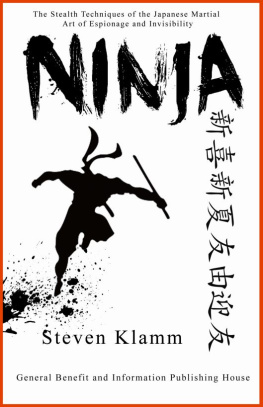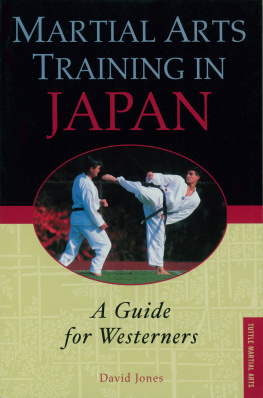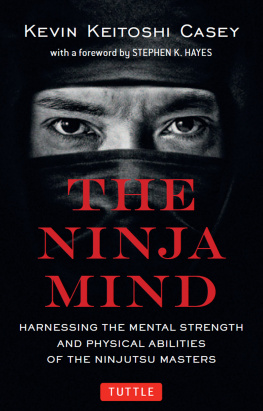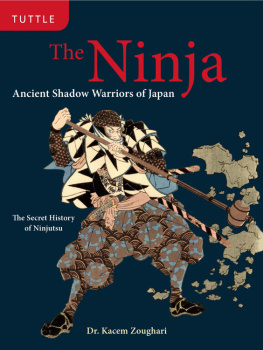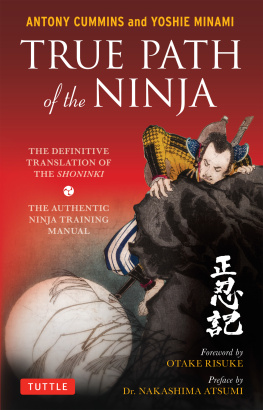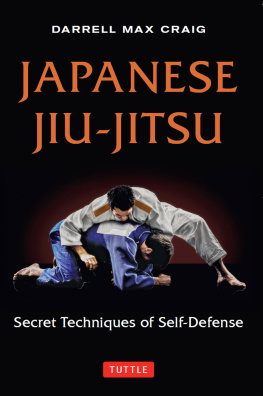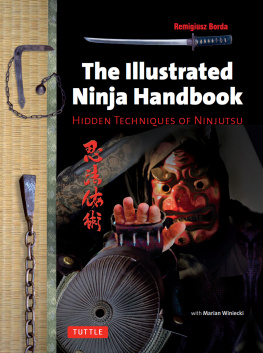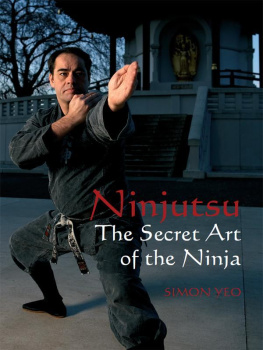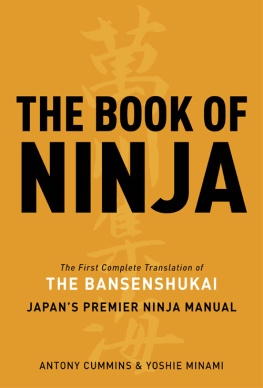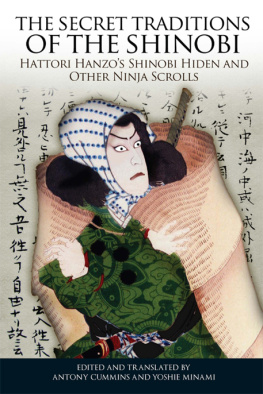Steven Klamm - Ninja and Ninjutsu - The Stealth Techniques of the Japanese Martial Art of Espionage and Invisibility
Here you can read online Steven Klamm - Ninja and Ninjutsu - The Stealth Techniques of the Japanese Martial Art of Espionage and Invisibility full text of the book (entire story) in english for free. Download pdf and epub, get meaning, cover and reviews about this ebook. year: 2013, publisher: General Benefits and Information Publishing House, genre: Religion. Description of the work, (preface) as well as reviews are available. Best literature library LitArk.com created for fans of good reading and offers a wide selection of genres:
Romance novel
Science fiction
Adventure
Detective
Science
History
Home and family
Prose
Art
Politics
Computer
Non-fiction
Religion
Business
Children
Humor
Choose a favorite category and find really read worthwhile books. Enjoy immersion in the world of imagination, feel the emotions of the characters or learn something new for yourself, make an fascinating discovery.
- Book:Ninja and Ninjutsu - The Stealth Techniques of the Japanese Martial Art of Espionage and Invisibility
- Author:
- Publisher:General Benefits and Information Publishing House
- Genre:
- Year:2013
- Rating:3 / 5
- Favourites:Add to favourites
- Your mark:
Ninja and Ninjutsu - The Stealth Techniques of the Japanese Martial Art of Espionage and Invisibility: summary, description and annotation
We offer to read an annotation, description, summary or preface (depends on what the author of the book "Ninja and Ninjutsu - The Stealth Techniques of the Japanese Martial Art of Espionage and Invisibility" wrote himself). If you haven't found the necessary information about the book — write in the comments, we will try to find it.
Ninjutsu (known in English as the techniques of stealth or the arts of invisibility) is the Japanese martial art of espionage. Practitioners are trained primarily to infiltrate enemy territory to find out about and report on troops, artillery, provisions and fortifications. The scope of training was eventually expanded to include a means of actively altering the course of battles, including arson, assassination and seizure and/or destruction of weapons and supplies.
Although practitioners are popularly referred to as ninjas, the following terms are also used to collectively describe them: shinobi (spy), onmitsu (secret agent), rappa (wild wave), suppa (transparent wave), toppa (attacking wave), kasa (grass), monomi (seer of things) and nokizaru (monkey under the eaves).
Despite historical evidence that suggest the presence of ninja-like activities in earlier times, it is generally believed that ninjutsu emerged in the Sengoku period (late 15th-16th centuries). Warfare was prevalent during this era, hence, there was a need for a formal fighting style. Schools teaching ninjutsu (ryuha) were eventually established, systematizing its techniques in the process. Fujita Seiko (1936) claimed that there were 71 different ryuha, the most popular of which was the following: the Iga-ryu, Koga-ryu and Kishu-ryu.
It is believed that the 69 other ryuha were derived from these three.
When peace was restored in Japan during the Tokugawa Era (1600-1867), the ninjutsu was rendered virtually useless. Its practice was reduced to a form of martial arts and some ninjas were recruited by the Tokugawa bakufu for surveillance and police purposes. Because of the secretive nature of their activities, ninjas were portrayed in Tokugawa-era art, drama and literature as superhuman beings that could disappear at will, leap effortlessly over walls or sneak undetected into a castle.
That image continues to capture the imagination of people today. In the decades shortly before World War II, ninjas were popularized both in fiction and in the films of directors like Makino Shozo. In the 1960s, the Shinobi no mono (Ninja: Band of Assassins) film series, starring Ichikawa Raizo, triggered an international fascination with ninjas and ninjutsu. Ninjutsu therefore became a central theme in action novels and films set in various locations worldwide.
It has also lost its Japanese character - American children and even cartoon character turtles have been cast as ninjas. Indeed, the ninja is now one of the most popular icons of both Japanese and contemporary global culture.
The American adventurer and traveler Steven Klamm (www.stevenklamm.com) has a lifelong fascination for ninjas. In this book he tells you everything you want to know about ninjas and their stealth art, ninjtsu. Youll learn the basic techniques of ninjutsu through a series of instructive pictures.
Download Steven Klamms book about Ninjas and Ninjutsu now!
Steven Klamm: author's other books
Who wrote Ninja and Ninjutsu - The Stealth Techniques of the Japanese Martial Art of Espionage and Invisibility? Find out the surname, the name of the author of the book and a list of all author's works by series.

